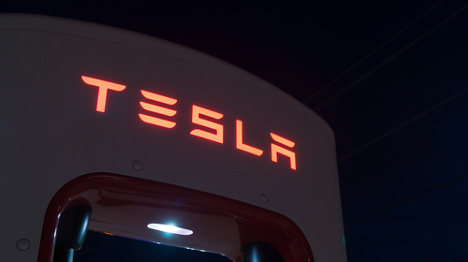What EVs & hybrids are traded for & the value they hold

According to NADA Used Car Guide, the Tesla Model S had much higher retention than gas-powered models in the luxury large car category. But what about other segments?
When a car shopper had a hybrid or electric vehicle trade-in last year, it would be put toward buying another hybrid or EV 38.5 percent of the time, says Edmunds.com.
This year, just 27.5 percent are going toward another hybrid/EV.
But perhaps what’s more head-scratching is this: Hybrid/EV trade-ins are more likely to go toward buying an SUV (33.8 percent) than any other segment.
“The overwhelming popularity of SUVs trumps just about any other trend in today’s market,” Edmunds director of industry analysis Jessica Caldwell said in an analysis last month. “SUV sales are up 22 percent in the last five years, and almost every other segment has suffered as a result.
“It’s especially true for hybrids and EVs, which generally don’t offer the size that today’s shoppers crave,” she said.
In fact, EV and hybrid loyalty has never been lower, according to Edmunds.
However, this should be viewed through an economics lens, rather than one of vehicle quality.
“This trend is not an indictment of the quality of these cars — hybrid and electric vehicles tend to be equipped with some of the most sought-after technology on the market today,” Caldwell said. “This is an economics trend, since today’s low cost of gas no longer makes it worth paying the price premium of hybrids and EVs.
“And there are so many fuel-efficient vehicles on the market today that environmental concerns weigh less than they might have in years past,” she added. “When you’re buying a vehicle that can get over 30 mpg, you can still say you’re doing your part to help the environment.”
It’s also important to note that the alt-fuel owners moving over to SUVs tend to still go the most eco-friendly route, most commonly choosing fuel-friendly compact SUVs, Edmunds said.
How much value they’re holding
When the shopper trades is in a vehicle, he or she is almost certainly considering what their current car is worth, as that can be pivotal to what is bought next.
So, perhaps another piece of the economics proposition is this: How well are these alternative-fuel cars retaining their values?
NADA Used Car Guide examined that in its latest Perspective report.
Your traditional gas-powered used vehicle depreciated 15 percent to 16 percent last year, NADA Used Car Guide said, with hybrids dipping an average of 17 percent to 18 percent.
Meanwhile, used plug-in hybrids depreciated 25 percent on average and the majority of electrics fell by more than 30 percent.
Greater depreciation, of course, leads to weaker retention. Consider NADA Used Car Guide’s data summarizing three-year vehicle value retention by segment on 2013 model-year vehicles.
In the compact car segment, for instance, gas-powered models held on to 49.5 percent of their value after three years. The six compact hybrids listed had retention ranging from 39.1 percent (Ford C-Max) to 53.9 percent (Toyota Prius).
Meanwhile, the electric Ford Focus was at 21.7 percent and the electric Nissan Leaf was at 26.9 percent.
The electric/hybrids listed for that segment fared better than the Focus and Leaf, but were still below the hybrids and gas-powered cars listed.
Similarly, in the subcompact category, gas-powered vehicles averaged 44.1 percent retention. The hybrid Honda CR-Z was at 47.9 percent, while the Fiat 500 (26.7 percent) and Smart FORTWO (22.2 percent) electrics came in well below.
In the midsize car category, the electric/hybrid Ford Fusion had three-year retention of 35.1 percent, compared to 47.4 percent retention average for gas models in this segment.
The hybrid midsize cars had retention levels ranging from 37.9 percent to 51.9 percent.
Of the five segments in NADA Used Car Guide’s data set that included either electrics or electric/hybrids (or both), there was one where the electric showed stronger retention than other vehicles listed: the luxury large car category, where the Tesla Model S reigns supreme — and by a large margin.
Its three-year retention was 56.2 percent, compared to 45.4 percent for the average gas-powered luxury large car. For comparison, hybrids included in the dataset included the Lexus LS (51.4 percent), Porsche Panamera (46.5 percent), Mercedes-Benz S Class (42.0 percent) and the BMW 7 Series (40.5 percent).
Still small slice
One key to bear in mind: Alternative-powertrain vehicles are still a considerably small slice of the overall new-vehicle market.
Jonathan Banks, NADA Used Car Guide's executive analyst, said in a news release on the report: “Looking at the past three calendar years, a whopping 47.7 million gasoline and diesel-powered vehicles were sold in the U.S. representing 96.6 percent of total sales over that period.”
Larry Dixon, NADA Used Car Guide’s senior manager of market intelligence, added: “By comparison, market share for alternative powertrains decreased from 3.8 percent in 2013, to just 2.8 percent in 2015 … with sales last year falling below 500,000 units despite the industry achieving nearly 17.4 million new-vehicle sales.”

 View The Latest Edition
View The Latest Edition

